Updated:
The Principle of Placing Bet on a Bookmaker’s Website
To place a bet on the bookmaker’s website, you need to perform the following procedural actions:
- Register on the website using your personal payment details.
- Deposit funds into your account (make a deposit) — without funds in your personal account, all further actions to confirm the account are blocked.
- Complete the verification procedure. In principle, you can place a bet without it, but without completing this procedure, it is impossible to withdraw any winnings.
- Choose the type of sport, sporting event (line), and outcome.
- Check the bookmaker’s limits — depending on the popularity of the sporting event, many bookmakers may limit bets with both minimum and maximum limits.
- Choose the type of bet (single, accumulator, system) and place the money within the allowed limits.
- Wait for the end of the sporting event and, in case of winning, withdraw the funds using the same method that was used for their deposit.
In practice, these actions may look as follows:
On the main page of the bookmaker’s website, locate the navigation menu item labeled “Live Events” or “Upcoming Matches.” The second option may include all the lines on which the bookmaker offers bets, including live betting lines.
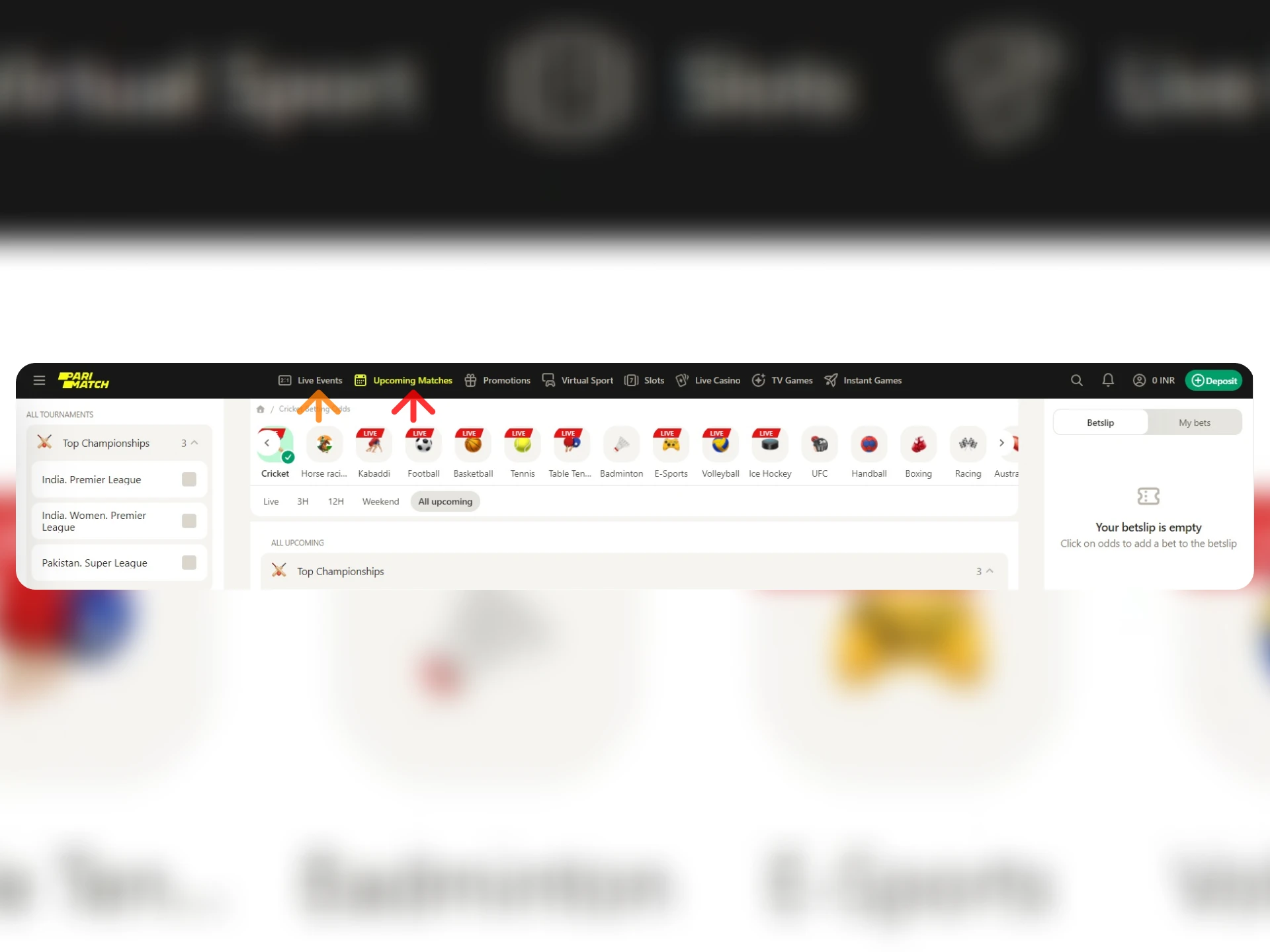
You select the sport type, for example, football. At the bottom of the screen, you’ll see the “lines” — sporting events on which you can place bets. They may be grouped by countries, sporting events (championships), etc.
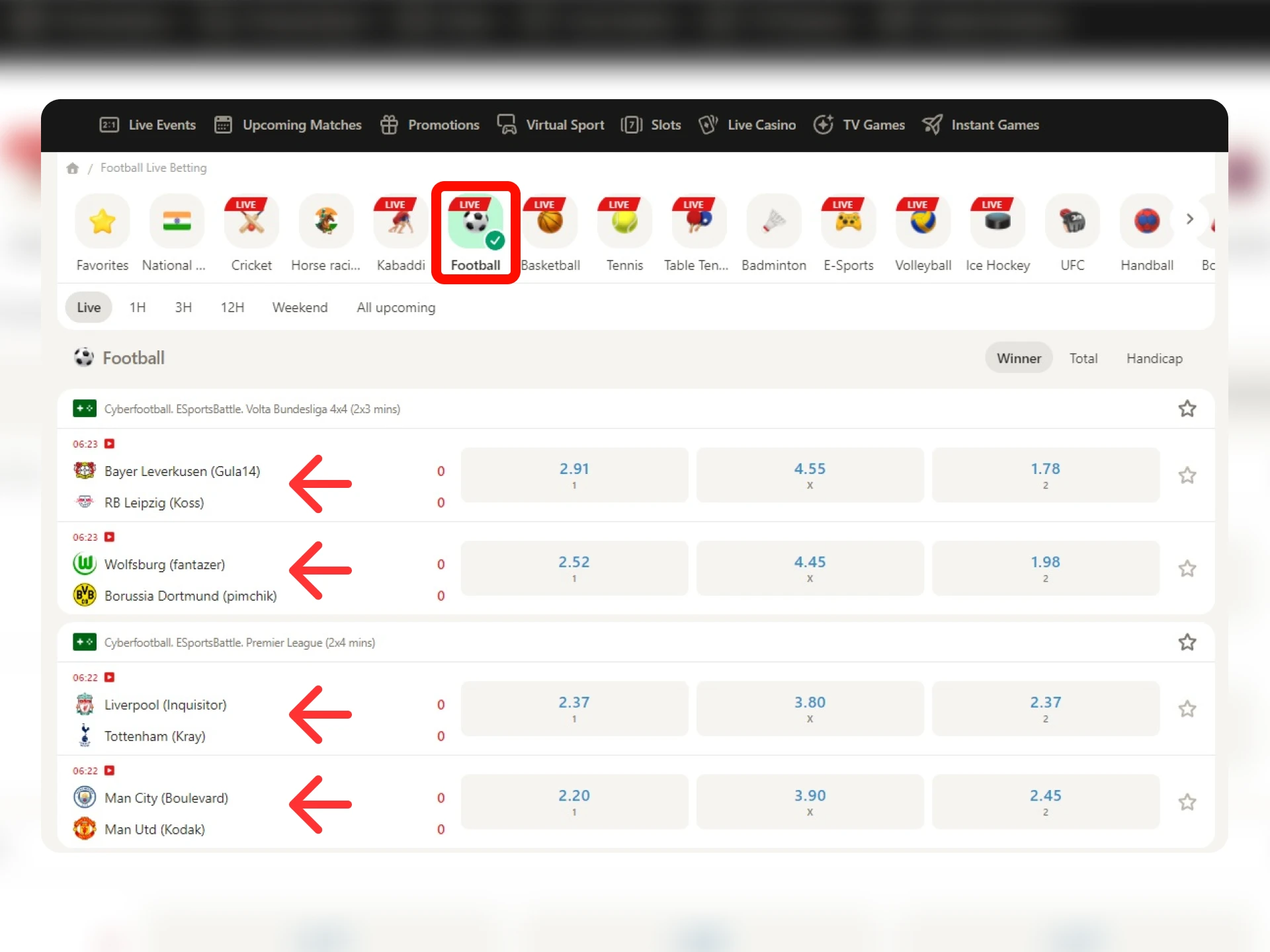
You choose the type of bet: winner, total, handicap. The calculation of odds, the presence of a handicap, and other features of the bet depend on the type of bet, so the bettor needs to understand the difference between types of bets and be able to freely operate with the main factors that determine their characteristics.
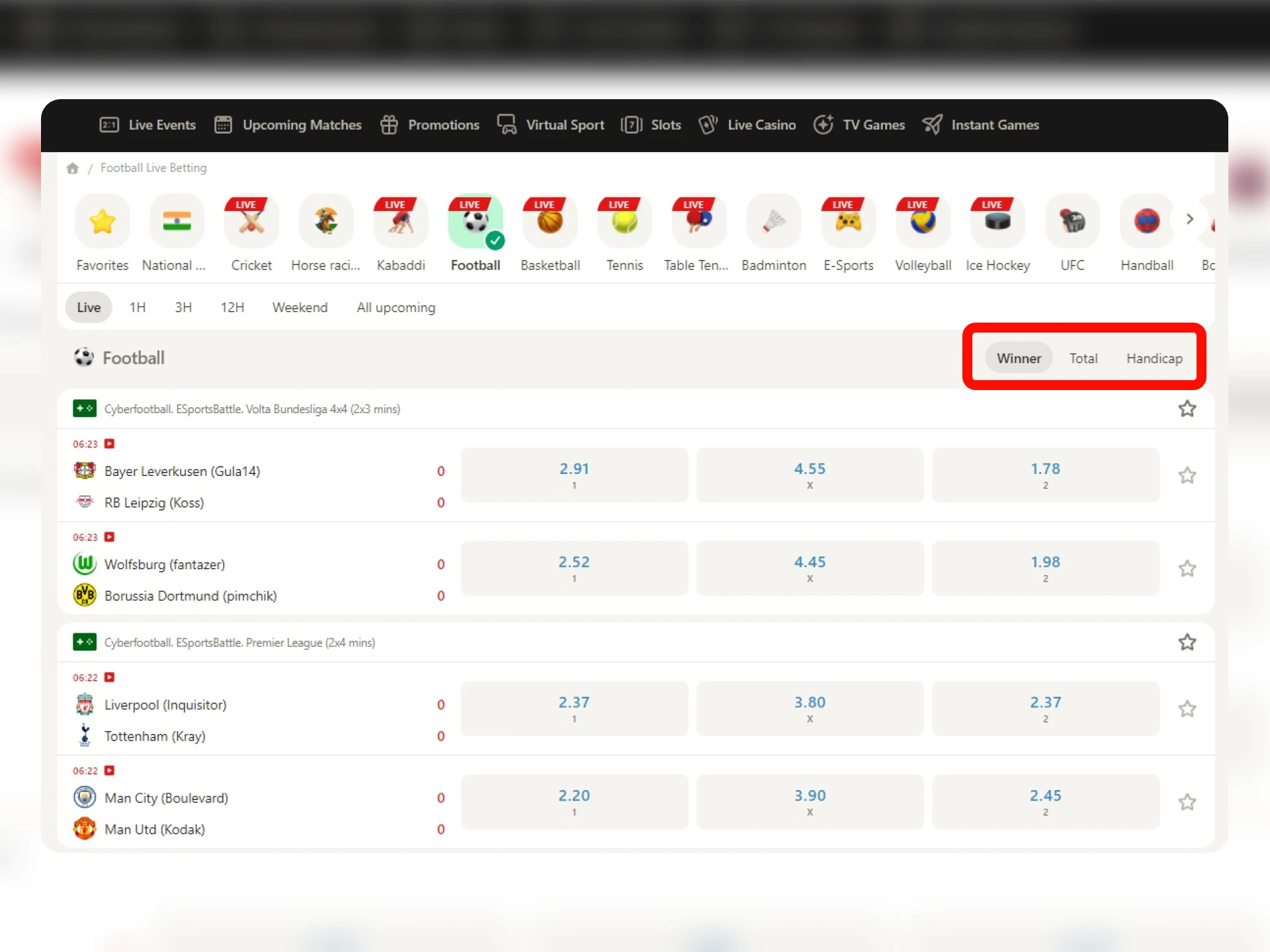
For example, let’s take the simplest type of bet, “Winner.” It means that the bettor is betting on the victory of one of the teams or on a draw.
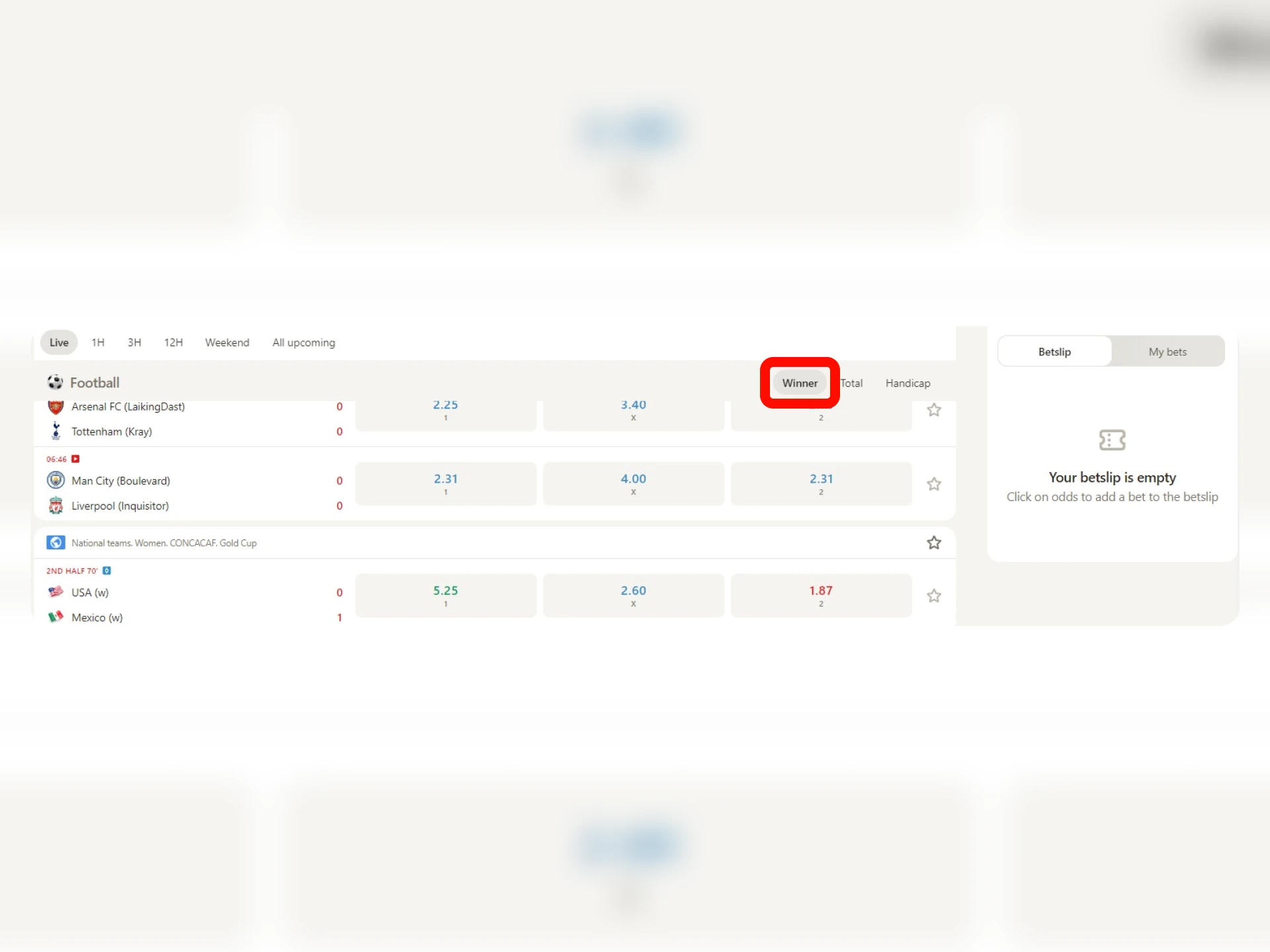
A bet on the selected outcome is placed by clicking on the corresponding odds. After that, the area around it changes color, and all the information is entered into the bet slip located on the right side of the website page. At the bottom of the filled bet slip, there is a field for the “bet amount,” which is set to the minimum amount for this type of bet by default.
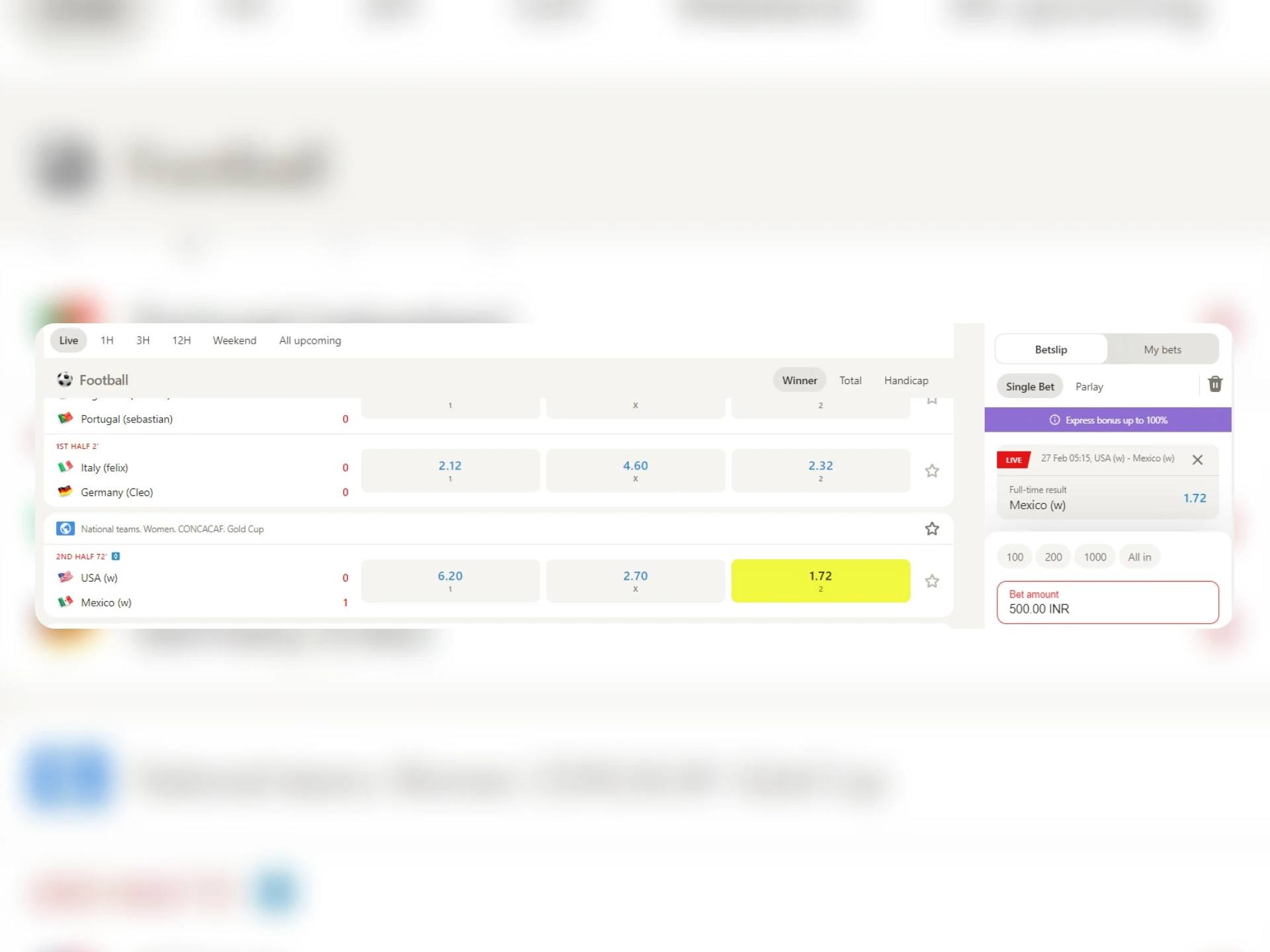
Another nuance of bets is their type: “Single bet” or “Parlay,” which can be selected at the top of the bet slip. For more details about their features, you can read one of our articles.
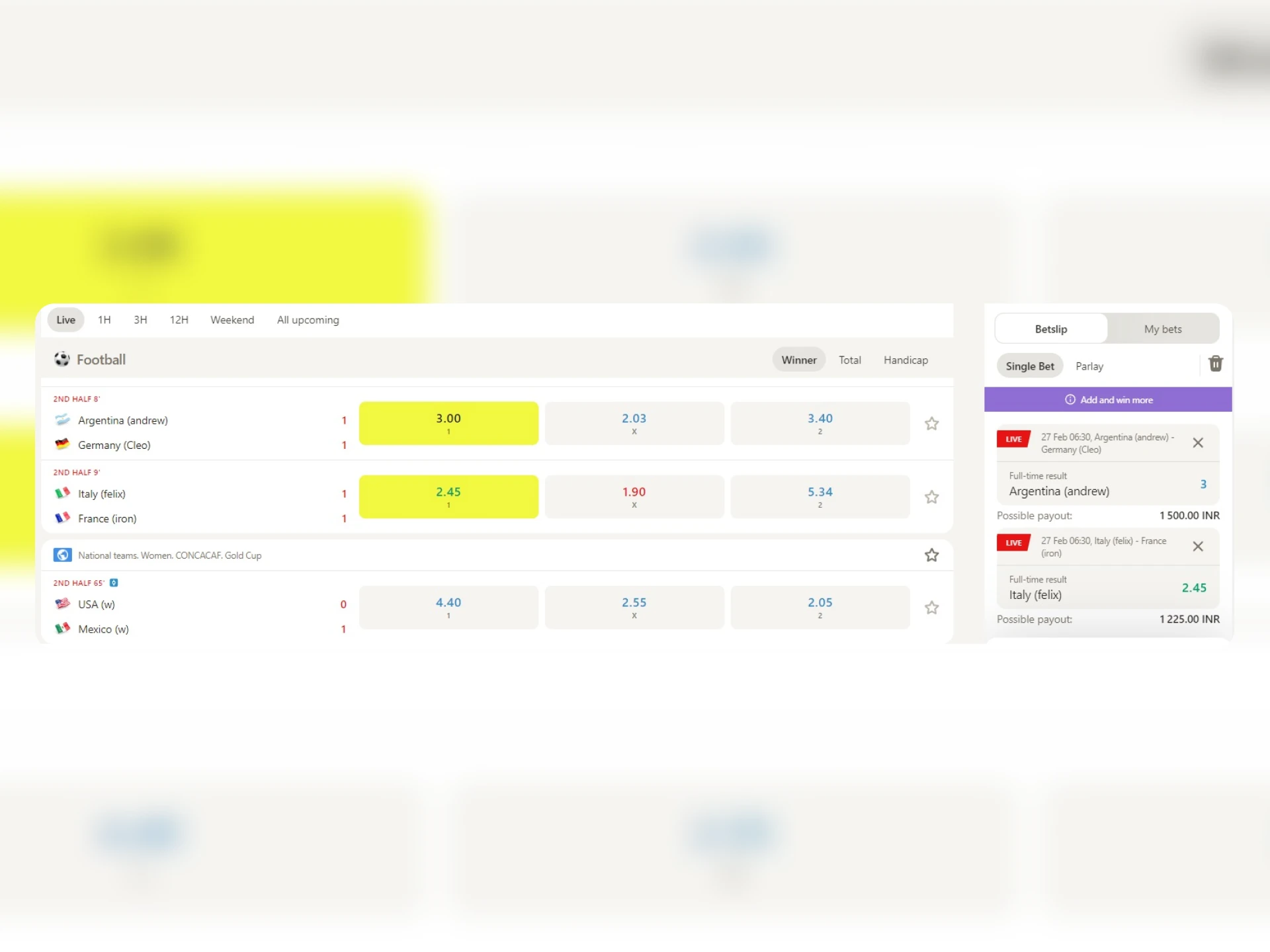
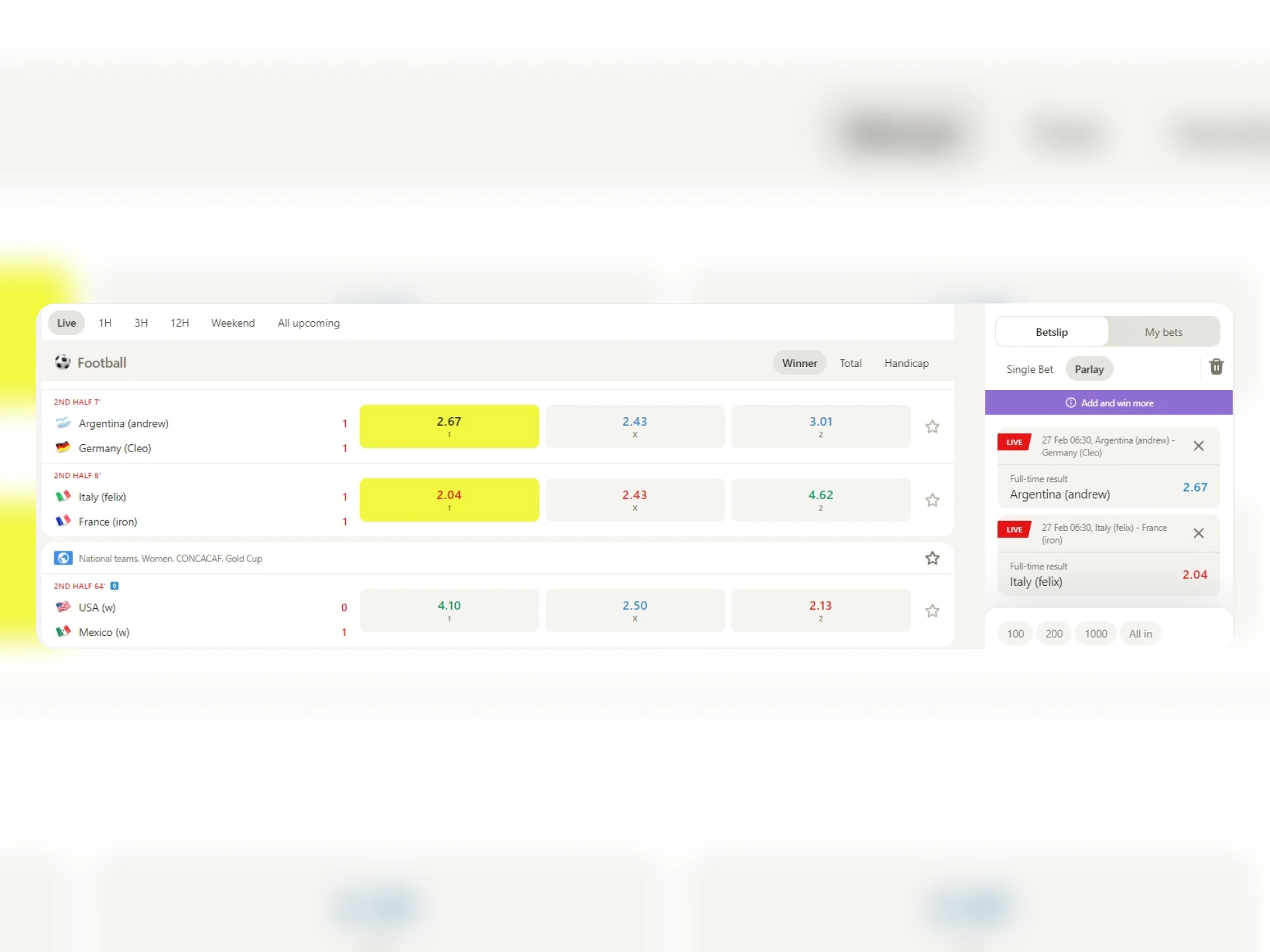
In the bet slip, the player needs to enter the amount they want to use as a stake. However, there is one important difference between single bets and accumulators. When entering the stake amount for single bets, if there are multiple selections in the bet slip, the bettor is placing that amount on each individual selection. In other words, 500 rupees will be deducted from their account for each of the selected bets.
If the Parlay mode is selected, then the entered stake will be evenly distributed among all the events included in the accumulator bet.
After filling in all the fields, the player only needs to click on the “OK” button and confirm their consent to place the bet and debit the corresponding amount from their account.
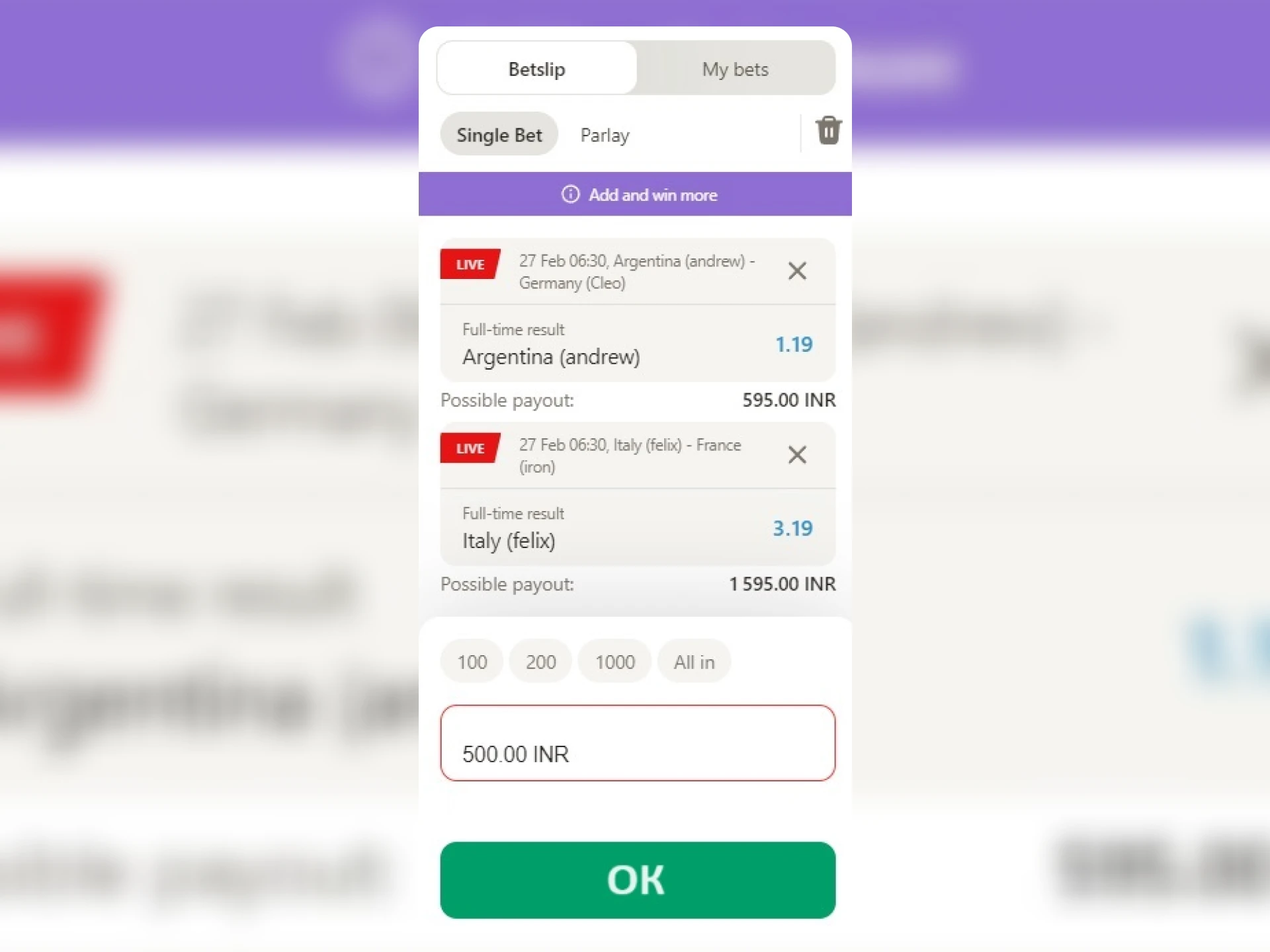
Bankroll and Financial Discipline — How Not to Lose a Large Sum of Money
Beginner bettors need to operate with the concept of a bankroll. This term originated in the betting industry from poker. Literally, it can be decoded as a “gaming bank.” It refers to the amount of money allocated by the bettor for bets over a specific period of time, most often for a gaming session.
When forming a bankroll, it is necessary to strictly adhere to the following three rules:
- The amount allocated for gambling should be an amount of money that one can afford to lose.
- It is unacceptable to form a bankroll from money borrowed from a bank or from personal loans.
- It is necessary to set incremental limits on allowable losses for the day, week, and month.
The Unbreakable Rules of Bankroll Management
In the community of experienced bettors, there is a concept known as bankroll management. It consists of a set of financial rules that players adhere to for effective control of their bankroll. This list is definitive, and individuals can add their own rules to it. However, the most important aspects include:
The Bets in the Bookmaker’s Office Should Pursue a Global Goal
- Examples of such goals could be:
- Winning 20,000 rupees per month;
- Winning an accumulator bet with 5 events;
- Making winning bets on 8 matches of a specific sports discipline;
- Placing 10 bets on lesser-known sports and so on.
Using Strategies
Bettors have developed numerous strategies, the main point of which is to limit the bet size relative to the bankroll. Depending on the strategy, this limit is typically set at 5–10%. Regardless of the strategy chosen at the beginning of the gaming session, it is essential not to abandon it or switch to another one until the end of the gaming period or until the bankroll is exhausted.
Avoiding Tilt Betting
Tilt is another term borrowed from poker. It refers to the emotional state of a player when they become disoriented and make bets chaotically, not in accordance with the strategy previously chosen. A characteristic tilt for a bettor is the violation of bankroll management rules, increasing the amount of bets relative to the bankroll to 20–30% or more. Typically, this state occurs in a player after several consecutive significant losses.
In Conclusion
Before entering the game, it is important to remember that betting is just one form of entertainment, not a way to earn a living. Betting adds extra excitement while watching a match and can provide a pleasant bonus for your analytical skills or luck. It’s not advisable to view it as a primary source of income.
Learn More




Comments